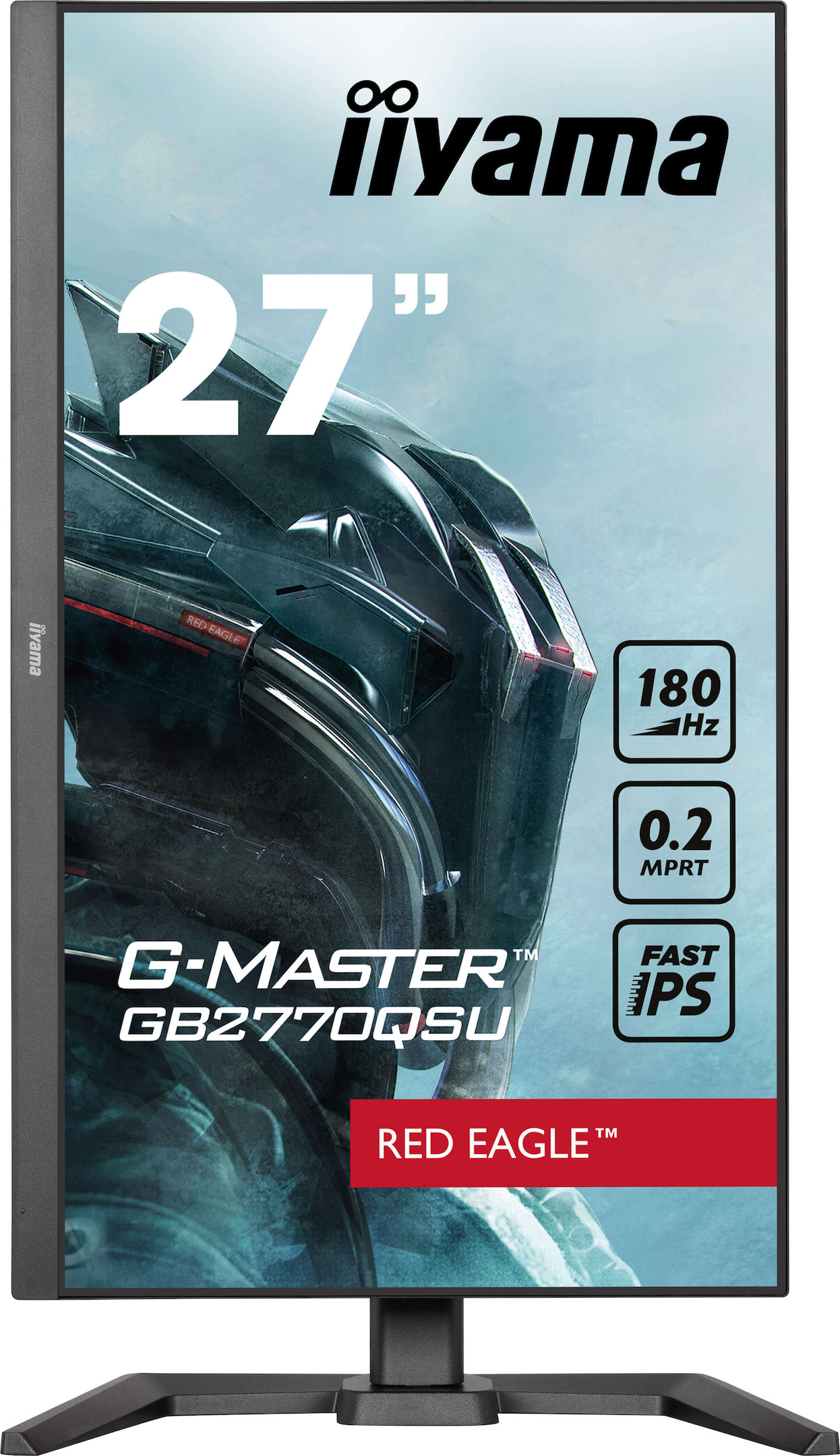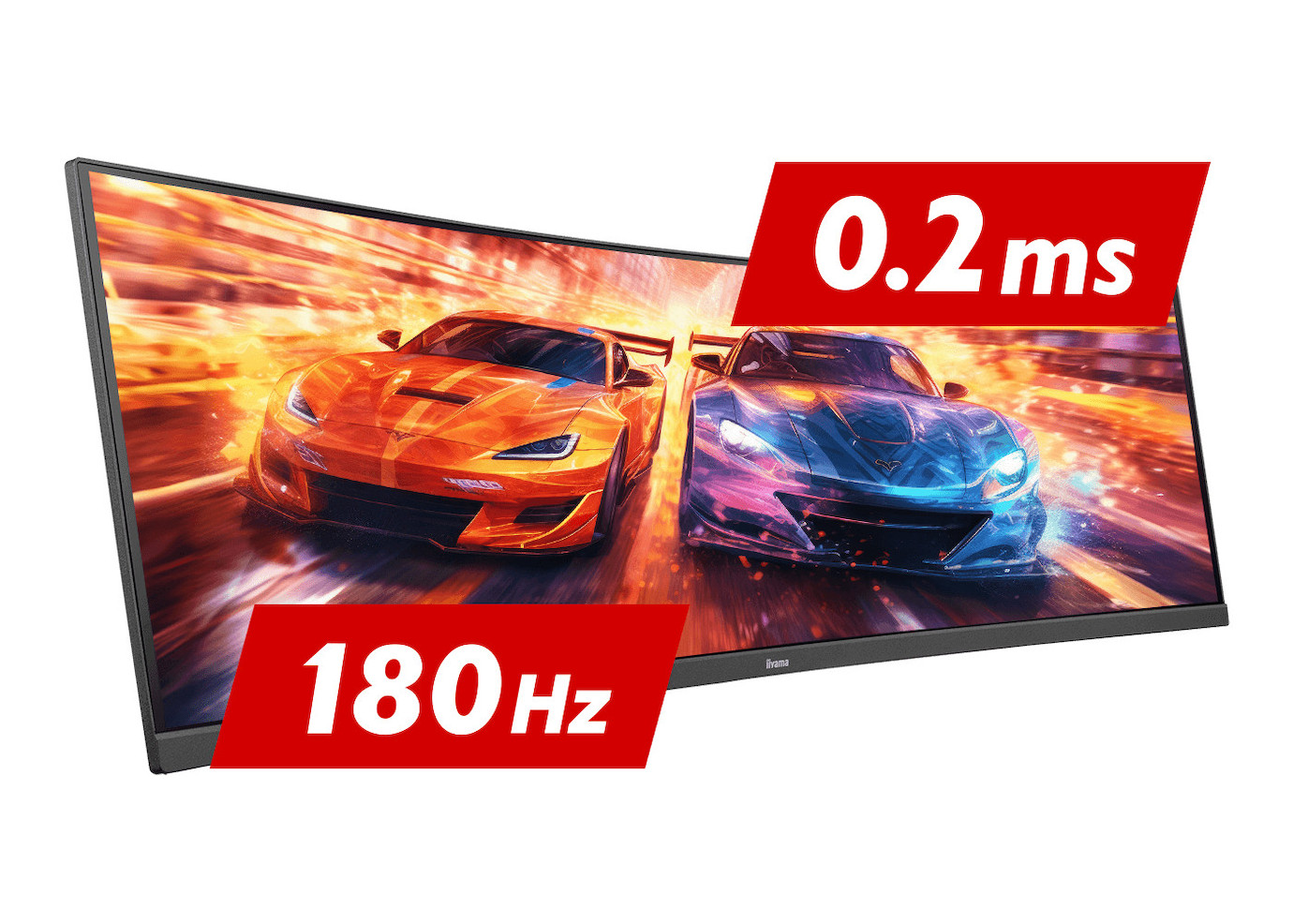















































£195.12*
- Resolution 2560 x 1440 QHD / WQHD
- Diagonal 27"
- Panel type IPS
- Refresh Rate 180Hz



Product information
Gain the competitive edge you need to realise your full gaming potential with the 27" (68.6 cm) GB2770QSU. With a WQHD resolution (2560 x 1440), an ultra-fast MPRT of 0.2 ms and a refresh rate of 180 Hz, this gaming monitor ensures smooth gameplay. Thanks to Adaptive Sync, you can make decisions in a fraction of a second and forget about ghosting effects or smear problems. The ability to adjust the brightness and dark colour tones with the Black Tuner ensures better display performance in shaded areas and the IPS panel technology guarantees excellent image quality. In addition, the gaming monitor is equipped with an ergonomic, height-adjustable 150 mm stand that allows you to adjust the monitor to your needs.
FAST IPS
Fast IPS technology not only guarantees vivid battlefield scenes with high colour fidelity, but also an ultra-fast response time of just 0.2ms (MPRT) for moving images.

WQHD
With WQHD resolution (2560x1440), your monitor offers 77% more information on your screen compared to a monitor with Full HD resolution. Nothing escapes your attention anymore.

180HZ & 0.2MS MPRT
With 180Hz refresh rate and 0.2ms response time, the power is with you! Make decisions in fractions of a second, the images are always displayed razor-sharp.

BLACK TUNER
The user can adjust the brightness and dark shadows with the Black Tuner so that a better view in the shaded areas helps to recognise the enemy earlier.
Technical data
| Name | iiyama GB2770QSU-B6 27" IPS Monitor, 2560 x 1440 QHD / WQHD, 180Hz, 0.2ms |
|---|---|
| Article number | 1000032123 |
| GTIN/EAN | 4948570123988 |
| Manufacturer SKU | GB2770QSU-B6 |
| EPREL ID | 1946195 |
| Model name | GB2770QSU-B6 |
| Brand | iiyama |
| Product Type | Monitor |
| Product Series | iiyama G-MASTER Series |
| Technology | LCD |
| Panel type | IPS |
| backlight | LED |
| Resolution | 2560 x 1440 QHD / WQHD |
| Diagonal | 27" |
| Aspect Ratio | 16:9 |
| Viewing angle - Horizontal | 178° |
| Viewing angle - Vertical | 178° |
| Contrast Ratio | 1,200 :1 |
| Screen finish | Matt |
| Max. Brightness | 400 cd/m² |
| Response time | 0.2ms |
| Refresh Rate | 180Hz |
| Support - VESA | 100 x 100 |
| Inputs | 1x Displayport , 1x HDMI , 4x USB-A |
| Outputs | 1x 3,5mm Jack |
| Features | Flicker Free , Integrated speaker |
| Product width | 61.3 cm |
| Product height | 433.8 cm |
| Product depth | 19.25 cm |
| Weight | 5.7 kg |
| Colour | Black |
| EEK Spectrum | A to G |
| Energy efficency class | E |
| Delivery contents | DisplayPort Cable , HDMI Cable , Power cable , USB cable |
| Condition | New |
| Warranty | 24 Month |
| Warranty type | Bringin service Service and support information |
Product safety
| Person responsible for the EU |
|---|
| iiyama International Corporate |
| Wijkermeerstraat 8 |
| 2131 HA Hoofddorp |
| Netherlands |
| info.de@iiyama.com |



